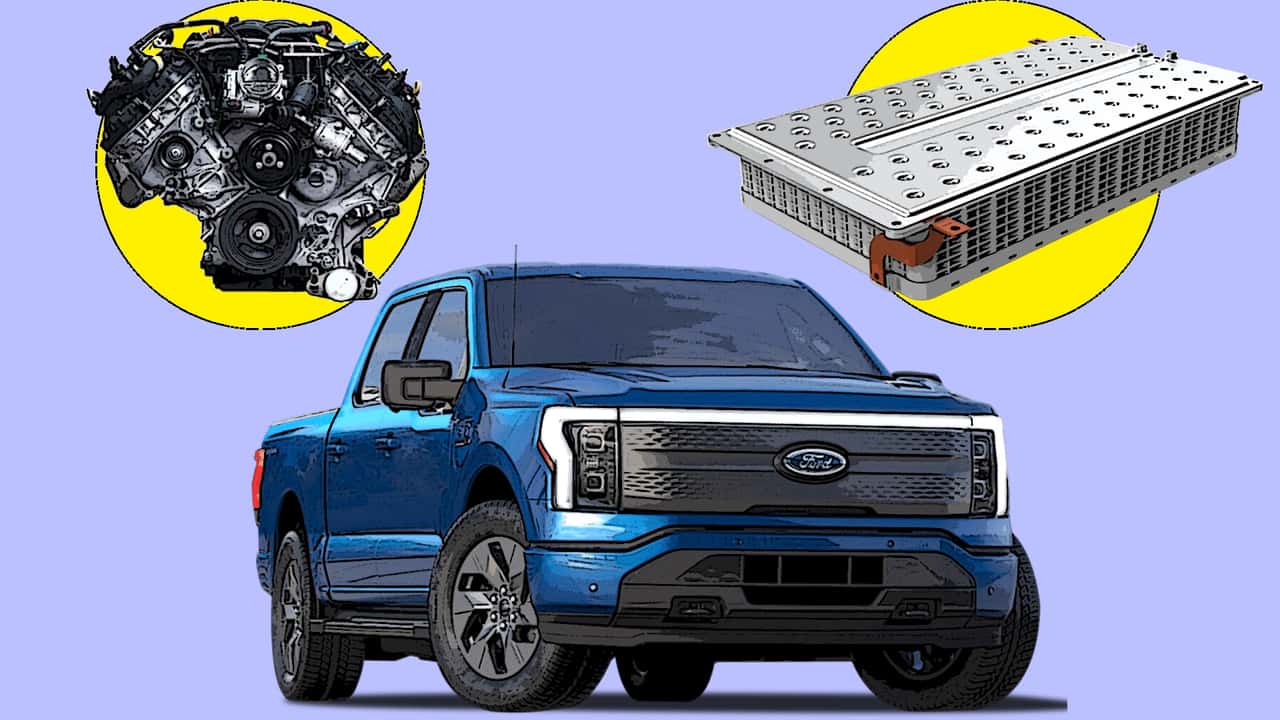- With the market for electric vehicles being cooler than expected, automakers are anticipating the need for combustion powertrains to stick around longer.
- Many manufacturers are instituting a “flexible” approach to maintain factories and supply chains for ICE, hybrid, and BEV platforms.
- This approach could lead to underutilized factories, resulting in instability, layoffs or even plant closures during a crucial period of transition.
The auto industry’s transition from combustion to battery power has been a fickle one. Automakers have had to remain agile to changing market conditions, never keeping 10 toes on the ground at any given time.
The resulting strategy is what many automakers call “flexible”—positioned just enough to meet EV demand while still being able to backpedal if the climate shifts more favorably towards hybrids or combustion power.
And while it’s securely planting manufacturers in the near future, this approach could result in some rather unfavorable long-term stability consequences, according to a new op-ed from Automotive News.

General Motors Fairfax Assembly plant in Kansas City, Kansas
At the forefront of concern is plant capacity utilization—basically, how best to use the factories that these automakers have to make the right amount of the right products.
Optimum plant utilization is about 80%, though automakers in the U.S. currently operate at an average of around 70% utilization according to GlobalData. However, as automakers prepare to build both combustion-powered and battery-powered vehicles, the utilization is expected to drop even further.
GlobalData suggests that by 2030, automakers that take this flexible approach could see some plant utilization figures plummet to under 60%. That number is expected to continue falling throughout 2035.
Michael Robinet, S&P Global Mobility’s executive director of automotive consulting, says that this has him “scared to death.”
“You’ve got some plants that are pigeonholed to be just BEV plants, some plants that are just pigeonholed to be just ICE plants, and some that can do in between,” said Robinet in a previous interview with Automotive News. “In the old world, your ability to move vehicles back and forth between plants was a lot easier, but when you go from ICE to BEV, that flexibility really becomes difficult. It’s not apples and apples. It’s apples and definitely oranges.”
But knowing how to plan for the “right” situation is the hard part. Basically, we’re seeing up and down EV sales as many mainstream buyers wait for more affordable options to arrive. So do automakers invest in hybrids until then? And how much? And what if a competitor gets there first? Or, what happens if they over-produce the “wrong” type of vehicle that’s seeing less demand? Since the supply chains around engines and batteries are so different, it’s hardly as simple as just making a different type of car on the fly.
Now, not all plants will be underutilized. In fact, some are expected to operate at near maximum capacity. However, the plans that are being kept online simply to fill a niche in the market—whether that be combustion or battery power—are expected to see drops. And the consequences of an underutilized plant could include worker layoffs or even full plant closures.
There is no crystal ball that can predict how consumers will react to a changing market. But the uncertainty of how quickly the industry will adopt electrification is driving the entire auto industry, from dealers to suppliers, bonkers.
In recent years, the electric vehicle (EV) market has seen significant growth and innovation, with many major car manufacturers investing heavily in the development of electric cars. As the world moves towards a more sustainable future, the adoption of EVs is seen as a crucial step in reducing carbon emissions and combating climate change. However, despite the many advantages of EVs, there are some who argue that staying “flexible” on the issue could be a dangerous approach.
One of the main arguments against staying flexible on EVs is the urgent need to address the climate crisis. The burning of fossil fuels for transportation is a major contributor to greenhouse gas emissions, and a rapid transition to electric vehicles is crucial in order to meet international climate targets. By remaining non-committal on EVs, governments and car manufacturers risk delaying this transition and exacerbating the effects of climate change.
Furthermore, the current trajectory of technological advancements in the EV market suggests that electric vehicles will soon become the norm. With major car manufacturers such as Tesla, Volkswagen, and General Motors investing heavily in electric vehicle production, it is clear that EVs will play a major role in the future of transportation. By failing to commit to EVs, governments and car manufacturers risk falling behind in a rapidly evolving market and missing out on the economic opportunities that come with it.
Additionally, the health and environmental benefits of electric vehicles cannot be understated. EVs produce zero tailpipe emissions, reducing air pollution and improving public health in urban areas. By remaining “flexible” on EVs, decision-makers risk prolonging the use of polluting internal combustion engine vehicles, putting public health at risk and delaying the transition to a cleaner, more sustainable transportation system.
In conclusion, while it is important to consider all perspectives when it comes to the adoption of electric vehicles, staying “flexible” on the issue could be a dangerous approach. The urgency of the climate crisis, the rapid advancements in EV technology, and the health and environmental benefits of electric vehicles all point towards the need for a swift transition to a cleaner, more sustainable transportation system. By committing to electric vehicles, governments and car manufacturers can pave the way for a more sustainable future for all.

